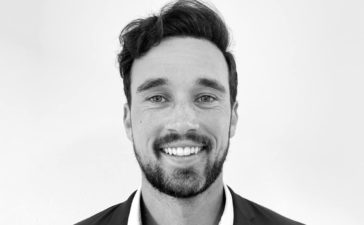Ask A Fund Manager
The Motley Fool chats with fund managers so that you can get an insight into how the professionals think. In this edition, NAOS Asset Management portfolio manager Robert Miller reveals 2 ASX shares he loves that play in very different sectors.
Investment style
The Motley Fool: How would you describe your fund to a potential client?
Robert Miller: We offer a boutique funds management business that is focused on ASX-listed industrials, with a focus outside the S&P/ASX 50 Index (ASX:XFL). Our motto across the business is 'conviction, long-term and aligned'.
We're very concentrated in what we do. We only hold about 20 positions at the moment, approximately, across our total pool of capital.
We're long-term investors. All of the shareholder funds that we currently manage are structured as listed investment companies. That allows us to be patient and have a disciplined investment strategy, which is typically a 5-year-plus investment timeframe that we're looking at.
Another big one for us is alignment. So we're big believers in investing in businesses alongside founders and management teams that have significant equity ownership in those businesses themselves.
They're our 3 key points. It's a pure focus on industrial-type businesses and we've got a strong ESG focus internally as well.
Our ASX share portfolio
MF: Can you name a couple of your holdings and why you love them?
RM: The one I'll start with is COG Financial Services Ltd (ASX: COG), which is an asset finance, aggregation and broker group. They're Australia's largest asset finance and broking aggregator. So it has approximately between 17% and 20% of the market.
We believe this is a very hard asset to replicate in terms of their distribution footprint. So if you think about what's happened with the mortgage and insurance industries, to use two examples, clearly there is an intermediary channel there where brokers are the vast majority — or have a very large influence.
We believe asset finance is going in the same trajectory as the other two industries, and COG has very much a firm footing in that marketplace, being the largest at what they do. So this gives them the opportunity to cross-sell other products over time because the asset finance relationship between the customer and the broker can be very strong.
A typical product would be, say you needed to buy a bit of yellow kit for farming or construction building — and you need a tractor or a ute, then COG, through their broker network, are the ones who would organise the finance for that.
I touched on insurance before and, obviously, the key in that market, one of the key ones is Steadfast here in Australia. And some of the ex-Steadfast people, including Cameron McCullagh who set this up, are involved in COG. So it's got that flavour to it.
They had a very strong FY21 but I think there's a long way to go in terms of the underlying tailwinds that we're seeing in a lot of the industries they operate in. Obviously, agriculture is strong, construction and housing and whatnot, that should be relatively strong over the next little while.
All of those factors, as well [as] the stimulus around the instant asset write-off programs, should all be beneficial to COG over the medium to longer term.
MF: And the other one?
Again, not necessarily our biggest but a material one for us, is Big River Industries Ltd (ASX: BRI). They're actually [an] over 100-year-old business, despite listing on the ASX in early April 2017, I think it was.
They're a building supplies and distribution business. And if you think about Bunnings and Mitre 10… they're predominantly retail. This is trade-only so there's absolutely no retail store footprint.
What they do is, as I said, provide and distribute building supplies. Say frame and truss timber, plywood and formply, and architectural products. They've got approximately 22 sites across the country at the moment where they sell products. And they've got some manufacturing operations as well, where they manufacture niche products like formply and some architectural products.
We think this business is run by an excellent CEO who knows everything inside-out in that business. And we think there's a very big opportunity to grow from here. As I said, they've only got low 20s in terms of the sites they operate. It's a very, very large [addressable] market. We believe, for instance, they've only got one site in Sydney. Their peers would have many more than that in terms of sites per capital city. So there's a long way to go in terms of the upside of site M&A, and also the ability to get strong revenues synergies out of that by, say you're buying a new site, an existing site that rolls into the rest of the group, you then have the ability to cross-sell all of your existing products and distribution capabilities over to that new asset that you've bought. In turn, you get margin expansion with scale, and we're starting to see this materialise now across the BRI group.
Secondly, the building cycle peaked in 2017 and it's been on the down cycle since then. And I think certainly with the example of [government program] HomeBuilder, obviously there's been a lot of building approvals over the last little while. A lot of that's yet to turn dirt. So we think that the building cycle is here to stay for the medium term. It's certainly in the upward trend and this should benefit Big River.
MF: It gives out a dividend as well.
RM: Yes, it does. As I said at the start, it's over a 100-year-old business and they've been paying dividends for a very long time — throughout many, many cycles. For us, that's a big factor that the business is able to survive all kinds of cycles and certainly thrive in some as well, like we're seeing at the moment.









